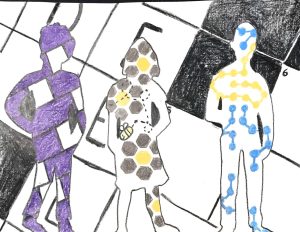Why and How There Was a Change in the US History Curriculum
May 8, 2019
In the 2019-2020 year, the CRLS history department will implement a change in the US History curriculum for 10th grade students. Instead of taking US History 1 and US History 2 in two separate semesters, students will take one US History class for one semester in sophomore year titled Critical Issues in US History. A second US History class, whether it is US History 2 or AP US History, is no longer required; students can now choose to take AP World History or other history electives in their place.
The previous curriculum covered the colonial era until the Reconstruction period in US History 1 and from the Reconstruction era to present day in US History 2. Critical Issues in US History will cover content from the colonial period to the present day, analyzing events from the Constitution and the Civil War all the way through 20th and 21st-century civil rights movements. Sophomores currently in US History 1 will continue into US History 2 or AP US History in their junior year. US History 2 will not be offered after next year, while AP US History will still be an option after Critical Issues.
Duncan MacLaury, a member of the History department who will teach one of the last US History 2 classes next year and teach Critical Issues the following year, was instrumental in the reconfiguration process. “There was an initial review starting at the end of last school year when the state started changing its history framework,” Mr. MacLaury explains. “We wanted to align ourselves with the state.”
As the department analyzed the curriculum, it was ultimately decided that the mandatory history classes could be condensed into two years: 9th grade World History and 10th grade Critical Issues in US History.
Mr. MacLaury describes, “We asked ourselves: ‘How do we make sure we’re getting deep into important issues but also giving students more options for electives in later years?’” Thanks to the careful review from teachers such as Mr. MacLaury, students will now have the opportunity to branch out further into history electives.
Christopher Montero, a current US History teacher, has high hopes for a better course structure thanks to the reconfigured schedule. “One class instead of two allows for us to look at a bigger picture and at how things connect, as opposed to how various individual events happened upon a timeline,” he predicts.
This shift will also continue to affect students’ history classes as they go on to junior and senior year. “Combining the content into one class opens up the possibility for students to take different electives instead of spending two years on different US history courses,” Mr. Montero adds. “We will be able to look at issues from the beginning of this nation to the present day.”
Another US History teacher, Brendan Kells, is also looking forward to the new curriculum in the coming academic year. He believes that the condensation of the classes will allow students to get a better grasp of the information, as it will all be together in one place. He summarizes his anticipation for the curriculum change, stating, “Generally, de-emphasizing content in history and instead emphasizing a deeper study into historical themes will benefit students long-term.”
This piece also appears in our April 2019 print edition.









